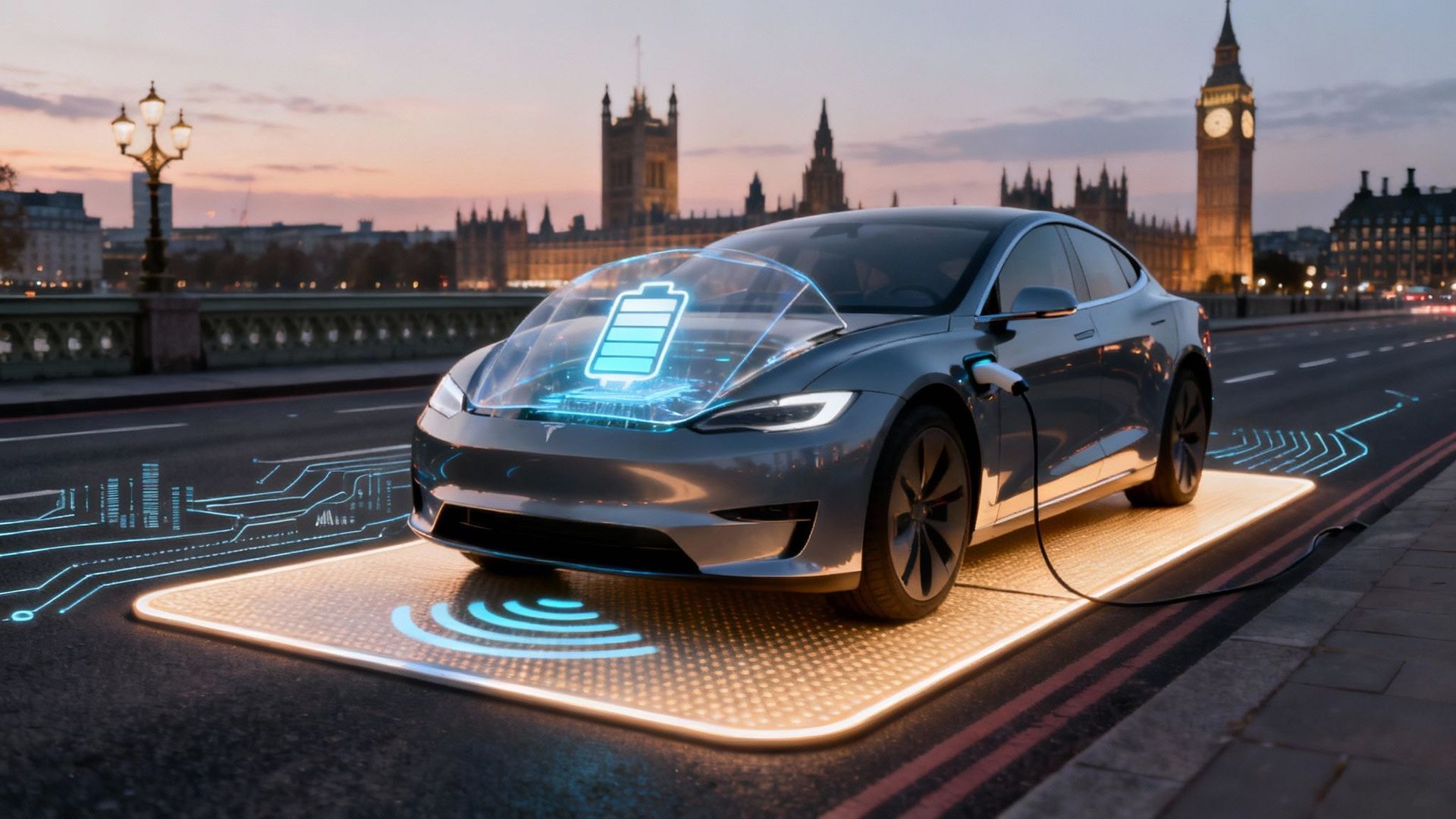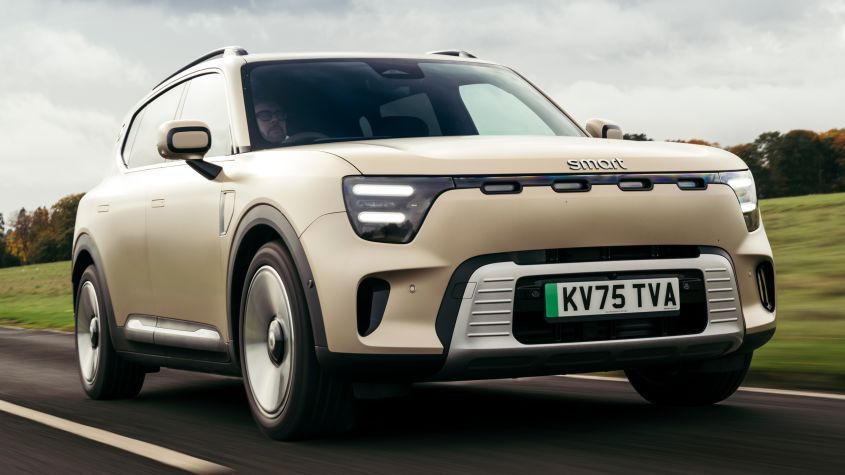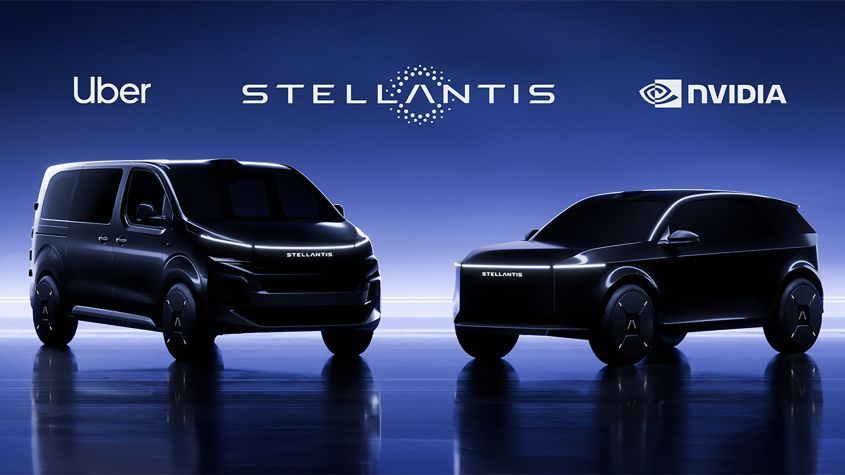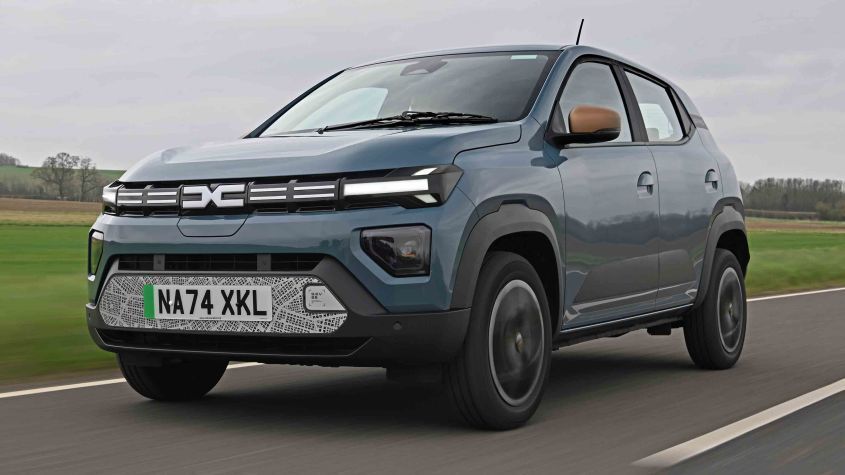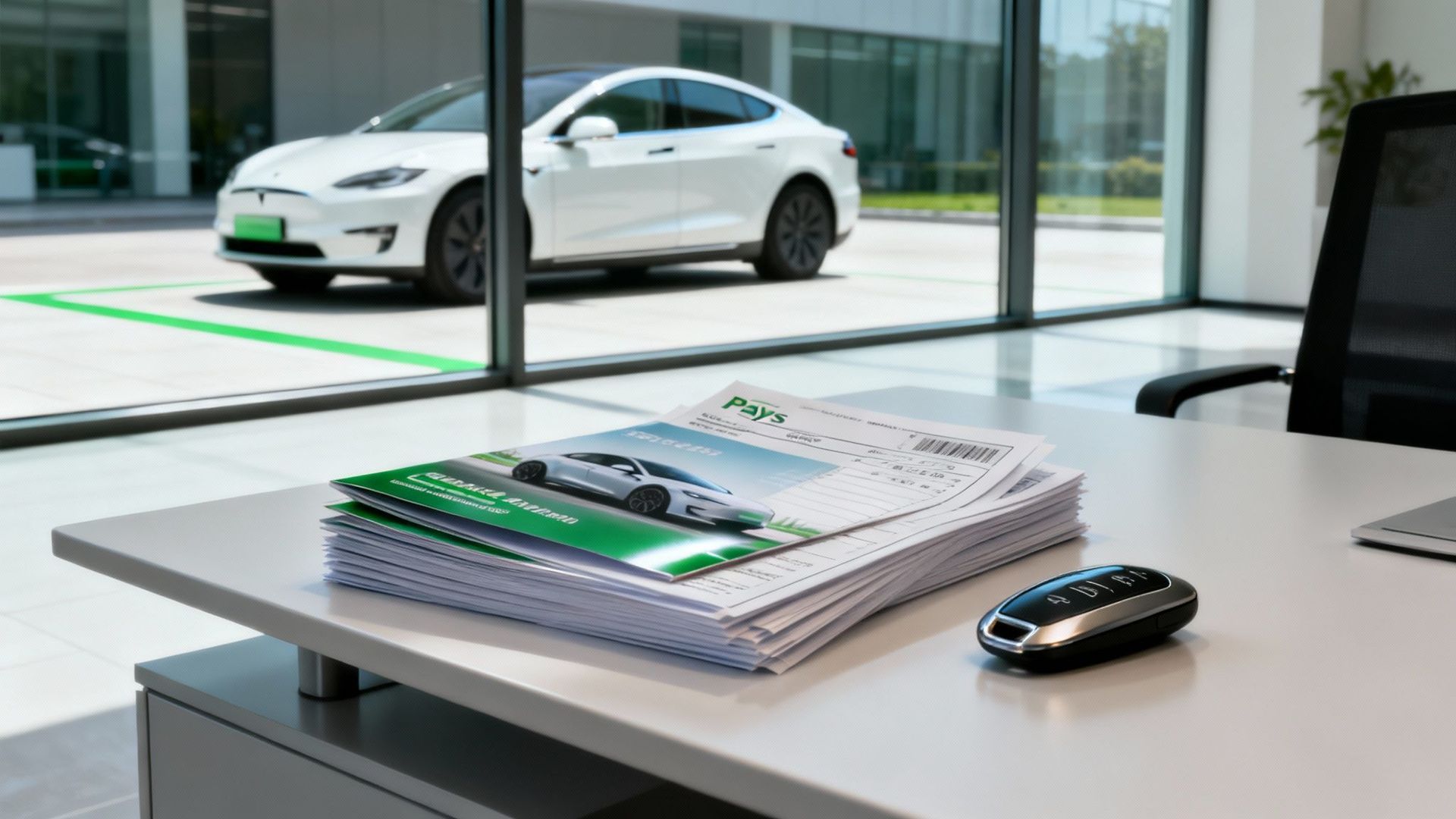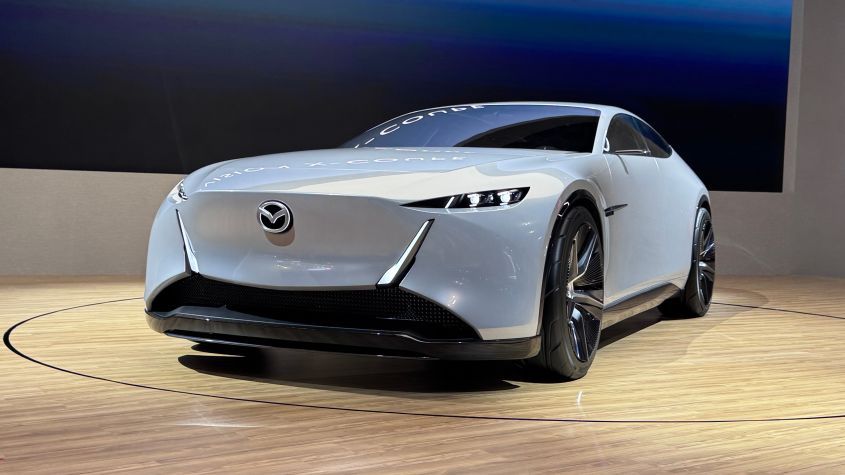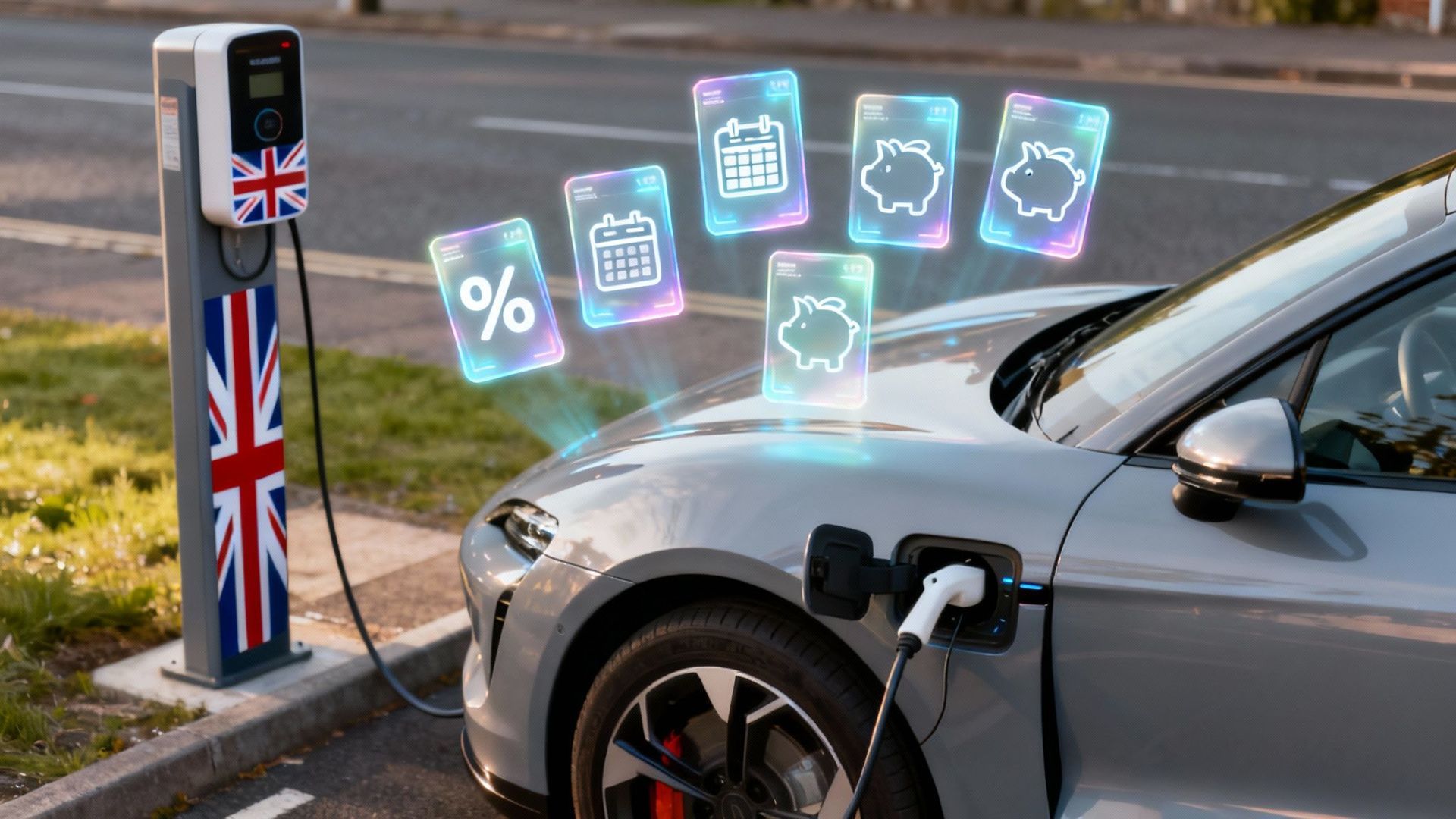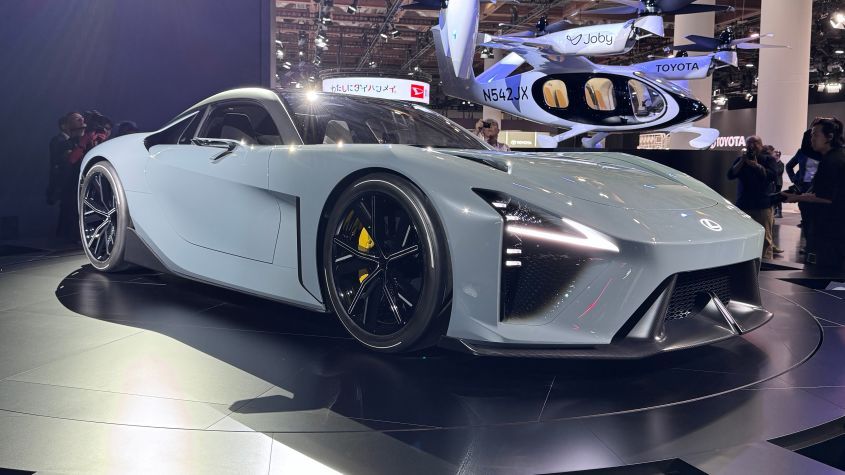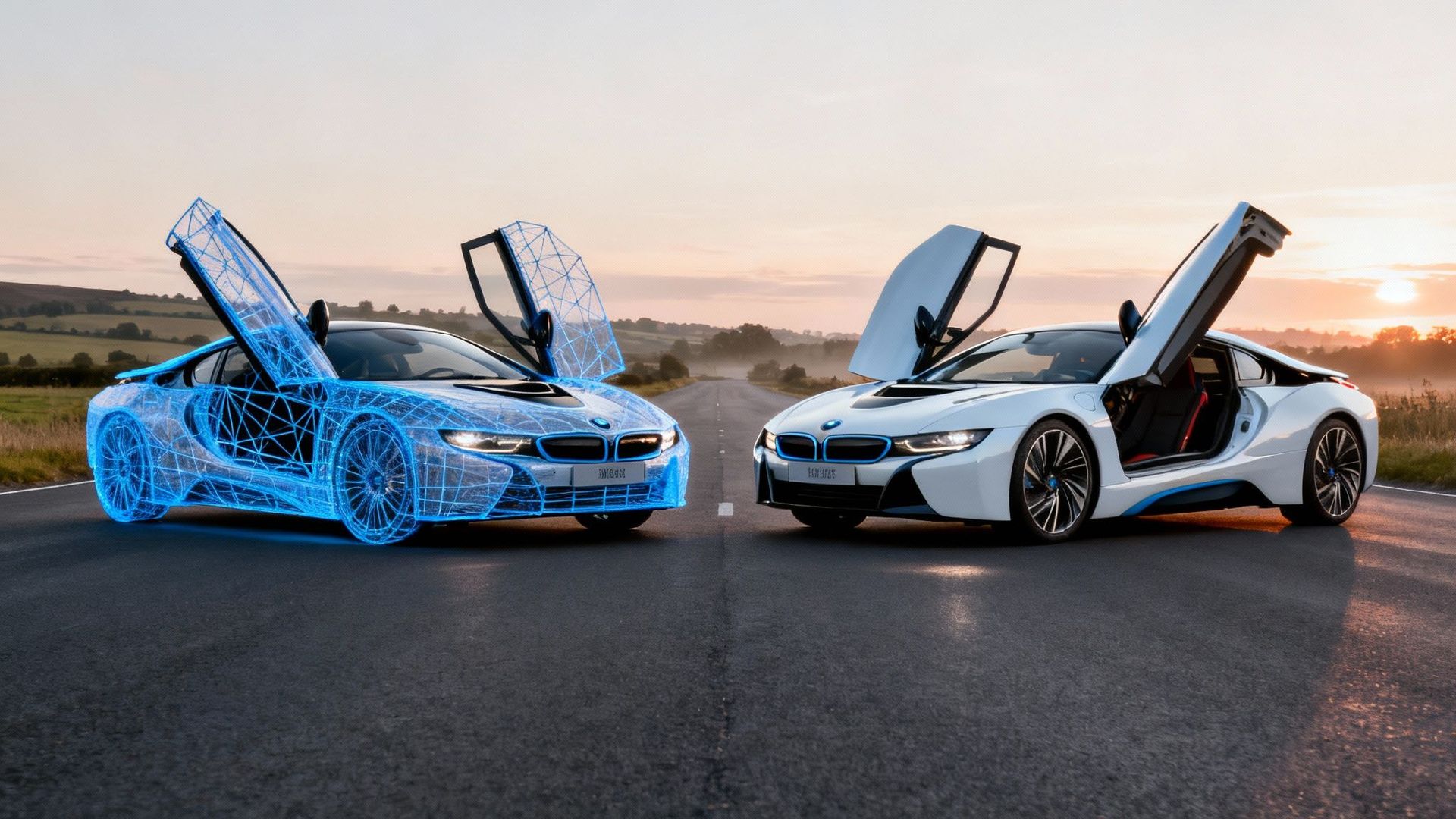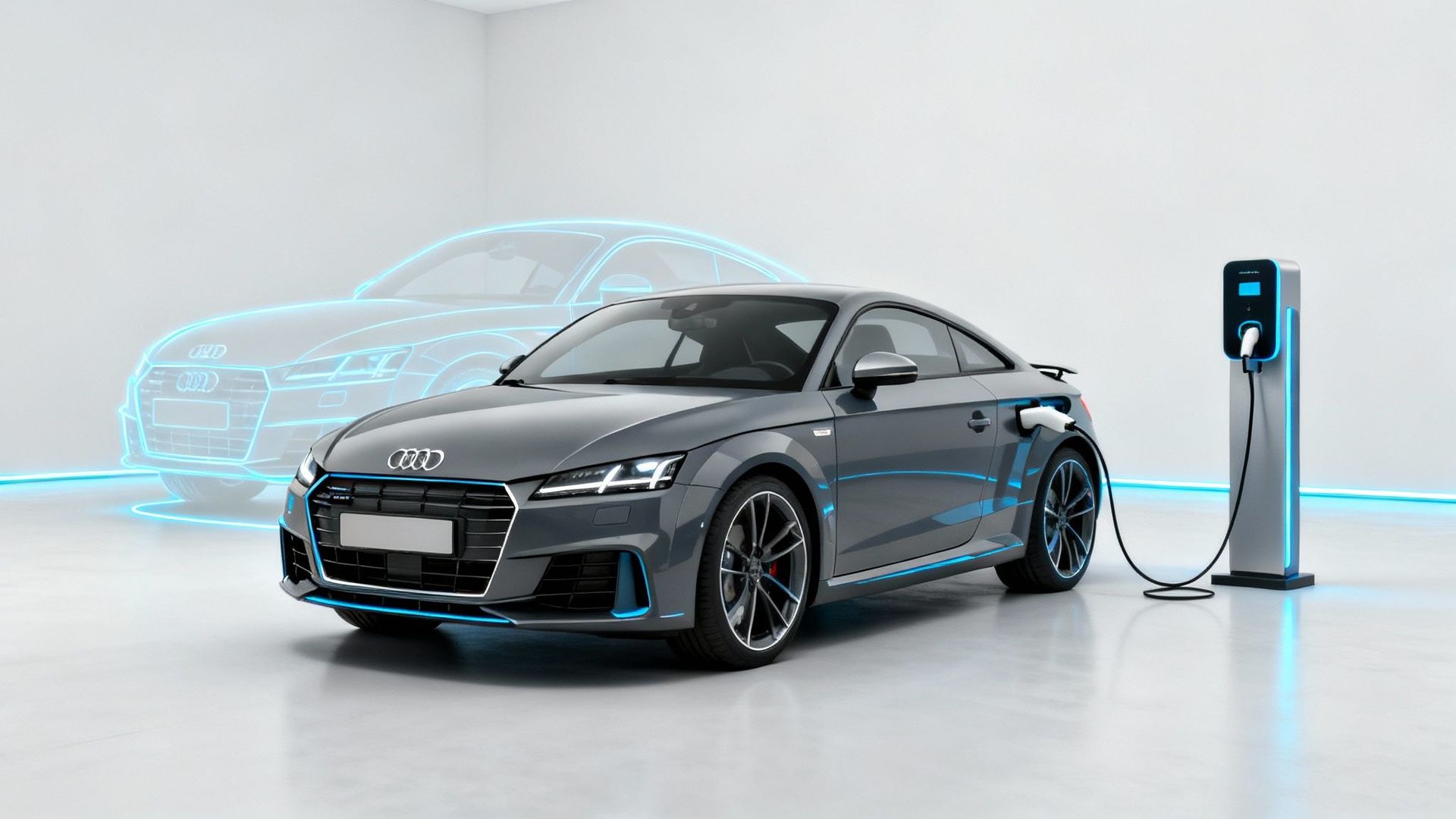Going the Distance? An Electric Car Range Comparison for the UK (and Other Lies)
When you're comparing electric car ranges here in the UK, the top spot on paper is usually nabbed by some wallet-busting premium model like the Mercedes-Benz EQS Saloon . But let's be brutally honest: the number you see in the brochure and the miles you actually get on a rainy Tuesday morning commute are about as closely related as you and Genghis Khan.
The Great British Range Charade
Let's cut to the chase. The advertised range of an electric car can feel like a work of fiction, more optimistic than someone clutching a lottery ticket on a Saturday night. It’s calculated in a lab, probably somewhere sunny, by people who accelerate with the gentle touch of a butterfly landing on a flower.
Back in the real world, on the drizzly, potholed reality of the A406, things are a bit different.
This guide is your official interpreter. We're here to translate the manufacturer's utopian fantasy into cold, hard, British reality. Before we get into a proper model-by-model showdown, it's vital to understand what you're up against. The official figure, known as the WLTP (Worldwide Harmonised Light Vehicle Test Procedure) , is the number they’re allowed to print. The real-world range is the number that matters when you’re trying to reach a service station just off the M1 with 4% battery left.
What Saps Your Precious Miles?
A few uniquely British factors are constantly conspiring to rob you of your advertised mileage. It’s a full-blown assault on your battery, led by:
- The Weather: Our glorious, unpredictable climate is the arch-nemesis of EV range. Cold batteries are unhappy batteries. Running the heating, wipers, and demister all at once is like asking your car to run a marathon while juggling flaming torches.
- Your Right Foot: Driving style is a massive factor. If you accelerate like you’ve just nicked it, you'll chew through your range faster than a toddler through a chocolate biscuit.
- The Terrain: The UK isn’t exactly the Netherlands. Hills, inclines, and even a slight headwind on the motorway will see your predicted mileage plummet.
The crucial takeaway is this: Treat the official range figure as a theoretical maximum—a 'best-case scenario' you'll likely never see. The real skill is knowing how much to knock off that number for your daily drive.
The UK market now has cars with wildly different capabilities. At one end, you've got the Mercedes-Benz EQS Saloon, which leads the pack with a staggering official WLTP range of 452 miles on a single charge. That’s theoretically enough for a round trip from London to Manchester.
Of course, older EVs have far less impressive stats, but upgrades are possible. If you're running an older model, you might be interested in our guide on getting more range from an old Nissan Leaf: https://www.voltsmonster.com/new-battery-in-old-leaf-160-miles-of-range
UK's Longest Range EVs at a Glance
To give you a baseline of what the market leaders claim, here's a quick look at the current heavy hitters in the official range department. And remember that word: official.
| Car Model | Official WLTP Range (miles) | Starting Price (Approx.) |
|---|---|---|
| Mercedes-Benz EQS | 452 | £105,000 |
| Polestar 2 Long Range | 406 | £48,950 |
| BMW i7 | 387 | £101,765 |
| Tesla Model S | 373 | £93,480 |
| Mercedes-Benz EQE | 384 | £68,810 |
These figures are the high-water marks set by the manufacturers. In the following sections, we’ll dive into what you can realistically expect from these and other popular models when they face the reality of British roads.
Decoding WLTP vs Real-World EV Range
Welcome to what might just be the greatest work of fiction in the modern motor industry: the official WLTP range figure. If you've ever looked at a shiny new EV in a showroom and marvelled at its claimed 400-mile range, you've been staring at a beautiful, government-sanctioned fantasy. It's the automotive equivalent of a dating profile picture taken ten years and three stone ago.
The Worldwide Harmonised Light Vehicle Test Procedure (WLTP) is a laboratory test designed to give a standardised range figure for every new electric car. It’s a bit of a utopian dream, really. The test involves gentle acceleration, balmy temperatures around 23°C , and a driving cycle more suited to a saint on a pilgrimage than a parent on the school run. It’s a world where traffic doesn't exist, and no one ever needs to blast the heater on a frosty February morning.
This brings us to the only number that truly matters: real-world range . This is the gritty, often disappointing figure you’ll actually experience out on British roads. It’s the number that dictates whether you make it to your destination with smug satisfaction or suffer the cold sweat of "range anxiety" while crawling behind a tractor.
The Unholy Trinity of Range Assassins
So, what causes this chasm between the brochure's promise and the dashboard's grim reality? In the UK, your battery is under constant assault from three main culprits. Understanding them is the first step towards developing a healthy scepticism for manufacturer claims and mastering a proper electric car range comparison for the UK market.
First up is temperature . Lithium-ion batteries are divas; they despise the cold. When the mercury plummets during a typical British winter, a battery's chemical reactions slow down, reducing its efficiency. On top of that, you'll be cranking up the heating, demisters, and heated seats—all of which sip precious energy from the main battery, potentially slashing your range by 20-30% or more.
Think of WLTP as a car's 'on paper' CV—impressive but needs a real-world interview. The real-world range is the reference check from its last job, telling you what it’s actually like to live with day-to-day.
Next, we have driving style . The difference between a leisurely Sunday drive through the Cotswolds and being late for a vital meeting on the M25 is immense. Aggressive acceleration and heavy braking are the enemies of efficiency. Driving an EV smoothly, anticipating traffic, and using regenerative braking effectively can add dozens of miles back to your predicted range. Conversely, treating every traffic light like the start of a drag race will drain your battery faster than a faulty phone.
Finally, there’s terrain . The UK is not a billiard table. Those charming rolling hills and steep climbs you encounter on a weekend away are hell for your battery. While regenerative braking can recover some energy on the way down, the effort required to haul a two-tonne EV uphill consumes a disproportionate amount of power. A journey through the Peak District will deplete your range far quicker than a flat cruise along the M4 corridor.
This growing awareness of real-world performance hasn't dampened enthusiasm, however. Electric vehicles are a rapidly growing segment, with battery electric vehicles (BEVs) accounting for 19.6% of all new car registrations. This represents a 21.4% increase from previous figures, showing that buyers are increasingly embracing electric power despite the WLTP-reality gap. You can find more insights into EV adoption statistics from this detailed report.
UK Electric Car Range Showdown: Head-to-Head
Right, enough with the theory. Let's get down to brass tacks and see how these electric cars actually stack up on Britain's roads. Forget the glossy brochures; this is where the rubber meets the reality of our unpredictable weather and motorways.
We're pitting some of the UK's most popular EVs against each other in a real-world range battle. To make it genuinely useful, I've broken them down into the categories that matter to most buyers: affordable city runabouts, do-it-all family SUVs, and premium long-distance cruisers.
For each showdown, we'll look at the official WLTP figures and then compare them with our more realistic estimates for typical UK summer and winter driving. This is all about finding out which car delivers on its promises and which one might leave you hunting for a charger just outside of Swindon.
Affordable Urban Runabouts: MG4 vs VW ID.3
First up is the battle for the hearts and wallets of drivers who want a great EV without re-mortgaging the house. The MG4 EV has absolutely stormed the market by offering incredible value, while the Volkswagen ID.3 is the established German giant's play for the electric hatchback crown.
The MG4 EV Trophy Long Range claims an official WLTP range of 270 miles . In the mild warmth of a British summer, you can realistically bank on seeing around 230 miles . When the frost bites and you're cranking up the heating, that figure will likely dip to a more modest 190 miles – still a very respectable range for the price.
Its main rival, the Volkswagen ID.3 Pro , posts a slightly higher WLTP figure of 274 miles . VW's engineering often shines through here, matching the MG in summer with a real-world range of about 235 miles . It does seem to suffer a little more in the cold, though, with winter range sometimes dropping closer to 185 miles .
The crucial difference here isn’t the headline range number—it’s the overall value. The MG4 consistently delivers nearly identical real-world performance to the ID.3 for significantly less money, making it a brutally effective choice for budget-conscious drivers.
To put these numbers into context, the chart below shows just how much WLTP figures can vary between models, setting the stage for these real-world comparisons.
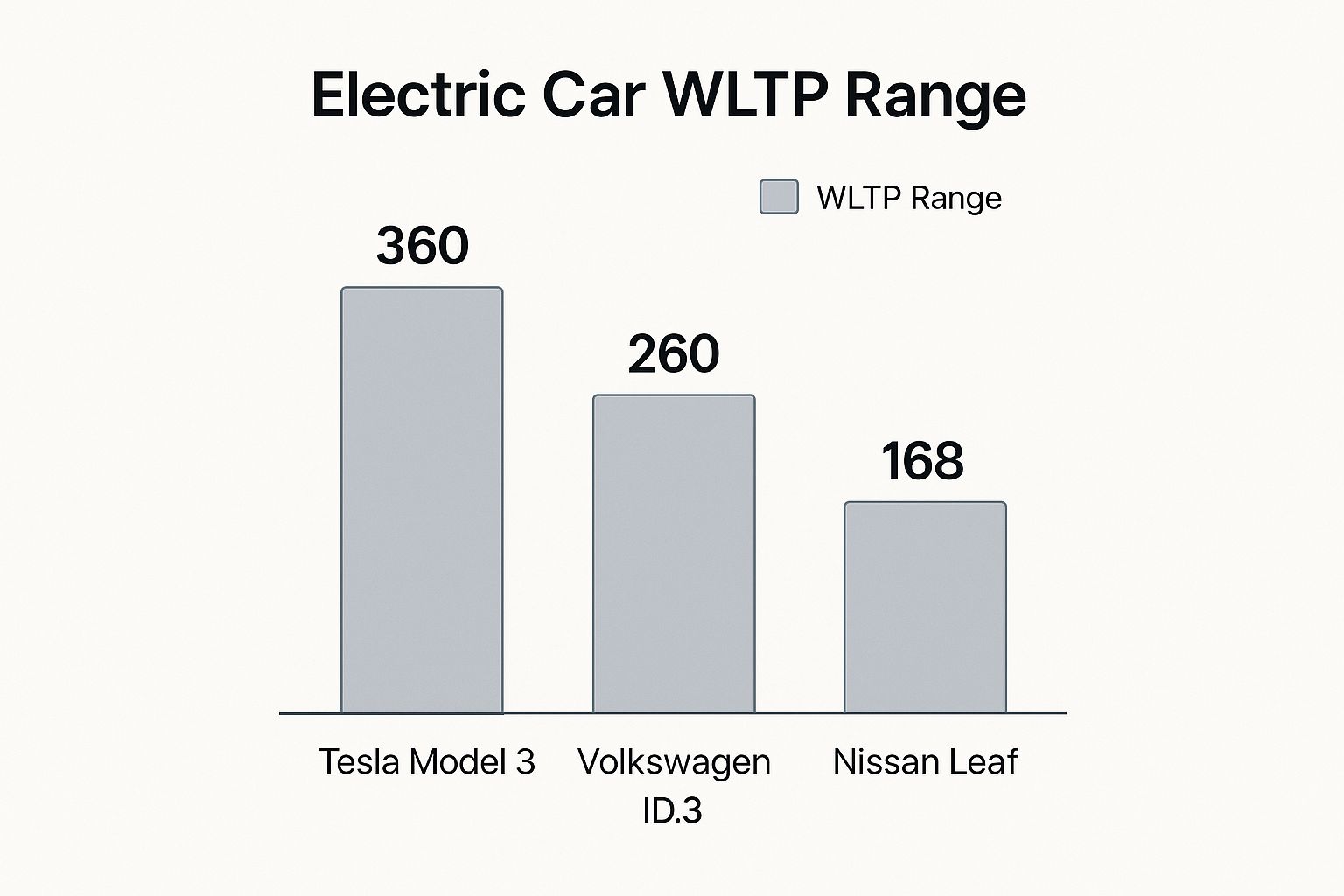
This visual clearly shows the significant gap in manufacturer-claimed range across different market segments, from compact city cars to premium saloons.
Real-World Range Face-Off: Family SUVs
When it comes to family SUVs, practicality, space, and a decent range are completely non-negotiable. This is where we see the undisputed sales champion, the Tesla Model Y, go head-to-head with the stylish and critically acclaimed Kia EV6. Let's see how their official figures translate to the real world.
| Car Model | WLTP Range (miles) | Estimated Summer Range (miles) | Estimated Winter Range (miles) | Our Verdict |
|---|---|---|---|---|
| Tesla Model Y Long Range | 331 | 290-300 | 240-250 | The pragmatic choice. Excellent efficiency and the unbeatable Supercharger network make it the king of hassle-free long journeys. |
| Kia EV6 'GT-Line' RWD | 328 | 280 | 220 | The stylish alternative. Its 800V architecture allows for incredibly fast charging, and the interior feels more premium than the Tesla's. |
| Hyundai IONIQ 5 Ultimate RWD | 315 | 270 | 215 | A comfortable cruiser. Shares its fast-charging tech with the Kia but prioritises comfort and distinctive retro-modern design. |
| Skoda Enyaq 85 | 348 | 295 | 240 | The practical powerhouse. Offers a massive boot and a very usable real-world range, making it arguably the most practical EV here. |
This match-up is a classic case of head versus heart. The Tesla or Skoda are arguably the more logical choices for their range and practicality, but the Kia and Hyundai's design and rapid charging might just sway those looking for something with a bit more character.
Premium Long-Distance Cruisers: Polestar 2 vs BMW i4
For those who spend their lives on the motorway and need a car that eats up the miles in comfort and style, the premium saloon category is where it's at. Here, the sleek Scandi-cool of the Polestar 2 takes on the German precision of the BMW i4.
The Polestar 2 Long Range Single Motor now boasts a mighty WLTP range of 406 miles , thanks to a recent battery upgrade. In real-world summer driving, you can confidently expect 340-350 miles . Winter will knock that down to around 280-290 miles , but that's still an epic figure that kills range anxiety for all but the most extreme UK journeys.
The BMW i4 eDrive40 is the driver's choice, hands down. Its official WLTP range is 365 miles . BMW’s efficiency is legendary, and in summer, it delivers a very honest 310-320 miles . It holds up well in winter too, typically managing around 260 miles , making it a deeply impressive and reliable machine for long trips.
Ultimately, the Polestar now has the edge on pure, outright range. But the BMW offers a far more engaging driving experience and a class-leading interior. Your choice depends entirely on whether your priority is maximum mileage or maximum driving pleasure.
Why Charging Speed Can Matter More Than Range
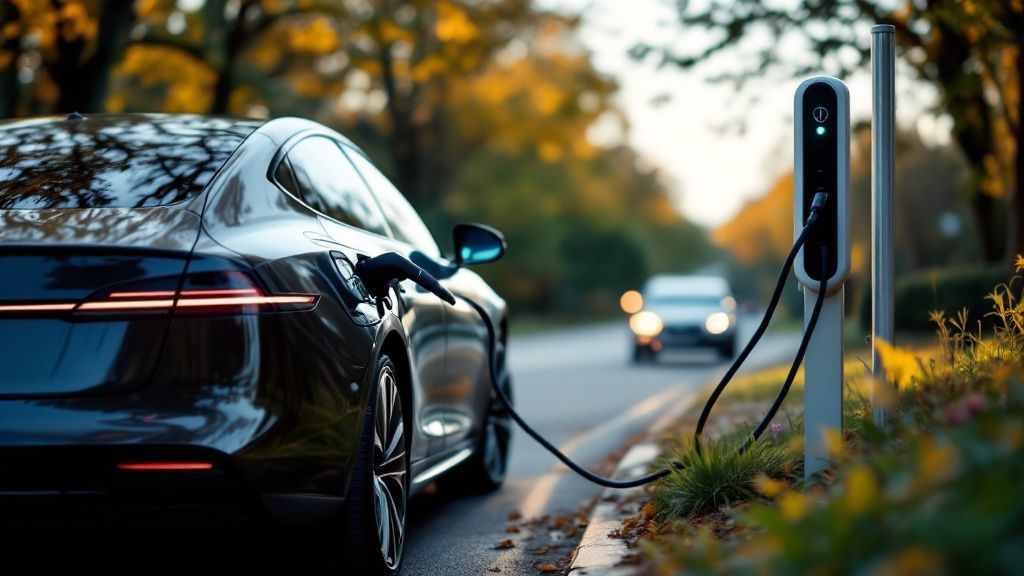
Here’s a provocative thought: are we all obsessing over the wrong metric? For years, the electric car range game in the UK has been a simple one—bigger is better. We’ve been conditioned to think a car with a 400-mile range is inherently superior to one with 250 miles . But what if that’s a load of old cobblers?
Let’s be honest, for the vast majority of your driving—the commute, the school run, the trip to Tesco—a car with even a 200-mile real-world range is more than enough. The only time that colossal range figure truly matters is on those rare long-haul slogs up the M1. And on those journeys, how quickly you can get back on the road is far more important than how far you could have gone in the first place.
This is where the conversation needs a reality check. We need to shift our focus from ‘how far can it go?’ to ‘how quickly and painlessly can I top it up?’.
The Service Station Showdown
Imagine two scenarios at a typical motorway services. In Car A, you have a massive battery with a claimed 400-mile range. You pull in with 50 miles left, but its charging technology is a bit dated. Plugging into a rapid charger, you discover it’ll take nearly an hour to add another 100 miles of range. You’re stuck nursing a lukewarm coffee, watching lorries go by, and questioning your life choices.
Now consider Car B. It has a more modest 250-mile range, but it’s equipped with cutting-edge 800-volt architecture. You pull into the same services, plug into an ultra-rapid charger, and in the time it takes to use the loo and grab a Ginsters, you've added 100 miles in just 15 minutes . You’re back on the road before the driver of Car A has even found a clean table. Which experience would you rather have?
This is the crux of the matter for long-distance travel. A car's ability to accept a fast charge is a more practical and valuable metric than its absolute maximum range. It’s the difference between a brief, efficient pit stop and a journey-breaking delay.
The key figure to understand here is the charging speed, measured in kilowatts (kW). Think of it like the width of a hosepipe filling a bucket. A higher kW number means a wider pipe, filling your car’s battery (the bucket) much, much faster.
Who Is Winning the Charging Race?
Not all EVs are created equal when it comes to guzzling electricity. Some brands have made ultra-fast charging a core part of their engineering, while others are lagging behind.
- The Korean Powerhouses: Brands like Kia and Hyundai (with cars like the EV6 and IONIQ 5) have been leaders here, using advanced 800V systems that allow for charging speeds well over 200 kW . This is the tech that gets you from 10% to 80% charge in under 20 minutes.
- The German Premiums: Porsche and Audi, with models like the Taycan and e-tron GT, also use 800V architecture, delivering blisteringly fast top-ups for those who can afford the price tag.
- Tesla's Ecosystem: While not always the fastest in terms of peak kW, Tesla’s brilliance lies in its seamless and reliable Supercharger network. It just works, which removes a huge amount of faff from the process.
This becomes especially important as the UK's charging infrastructure continues to grow. There are now more than a million EVs on our roads, all vying for a plug. The network is thankfully expanding to meet this demand, though finding a working, available charger can still be a lottery at times.
So, when you’re comparing electric cars, look beyond the headline WLTP figure. Dig into the spec sheet and find the car’s maximum DC charging speed (in kW). A car that can consistently pull 150 kW or more will make your long journeys infinitely more pleasant than one that trickles along at 50 kW , regardless of its total range. You can learn more about this by checking out our guide on the EV charging landscape in the UK. It might just be the most important number you look at.
How to Choose the Right EV Range for Your Life
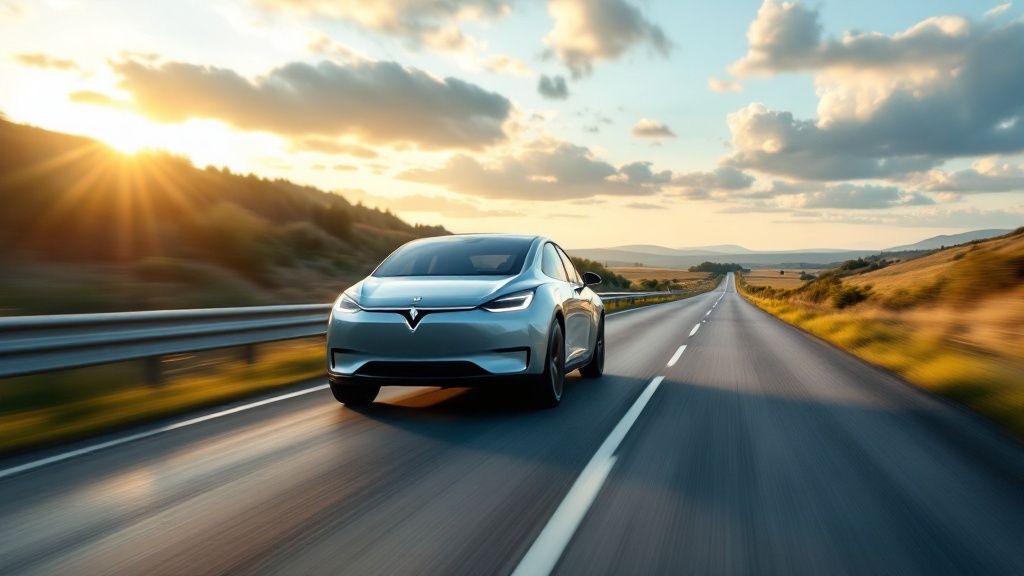
Right, let’s get practical. Forget the manufacturer’s fantasy figures and abstract numbers for a moment. This isn’t about chasing the biggest number on a spreadsheet; it’s about figuring out how much range you actually need for your daily life, not how much the car industry wants to sell you.
Paying thousands extra for a massive battery you’ll never fully use is like buying a ten-bedroom mansion when you live alone. It’s a complete waste of money. On the flip side, getting a car with too little range will turn every long journey into a nail-biting logistical puzzle. The real goal is to match the car to your life, not the other way around.
Let's break this down into some real-world scenarios to help you find that sweet spot.
The School Run Specialist
You are the undisputed master of the local loop. Your car's life is a series of short, sharp bursts: dropping the kids at school, a flying visit to Aldi, and maybe a trip to the vet. The furthest you ever venture is to a soft play centre in the next town over, and the M25 is just a place you hear about on the traffic news.
For this kind of lifestyle, a gigantic range is totally pointless. You’re almost exclusively charging at home overnight, so you start every single day with a "full tank." A realistic, real-world range of 150-180 miles is more than enough to cover your weekly duties without a second thought.
- Target Real-World Range: 150+ miles
- Car Suggestions: MG4 Standard Range, Vauxhall Corsa Electric, Fiat 500e (with the larger battery).
These cars offer all the range you’ll ever need for local driving, saving you a small fortune on a bigger battery that would just sit there, unused.
The Daily Commuter
Your life is a bit more predictable. You face the same 30, 40, or even 50-mile slog to the office and back, five days a week. That's a round trip of up to 100 miles a day, with a bit of motorway driving probably thrown in for good measure. You need a car that can handle this without giving you a panic attack if you get stuck in traffic on a cold December evening.
This is where you need a comfortable buffer. While a car with 150 miles of range could technically do it, a proper winter day with the heating on full blast would cut things dangerously close. Aiming for a car with a solid real-world range of around 220-250 miles is the sensible play. This ensures you can do your commute, run an errand on the way home, and still have plenty of juice left in reserve without feeling pressured to charge every single night.
Buying the right amount of range is the first step to conquering range anxiety. Many drivers overcompensate, but understanding what car buyers often get wrong about EV range anxiety can save you a lot of money and stress.
The Weekend Explorer
You’re the adventurous type. Your weekdays might be local, but come Friday, you’re loading up the car to head to the Peak District, the Cornish coast, or the Scottish Highlands. Your journeys are long, sometimes unpredictable, and often end somewhere remote where a public charger is a rare and beautiful sight.
For you, range is king. But as we’ve discussed, so is charging speed. You need a car that not only has a substantial battery but can also top it up quickly at a motorway service station. A real-world range of 280+ miles is your entry ticket to stress-free adventures. This allows you to comfortably tackle a 200-mile journey with a healthy margin, even when the weather turns against you.
- Target Real-World Range: 280+ miles
- Car Suggestions: Polestar 2 Long Range, Tesla Model 3 Long Range, Kia EV6, Skoda Enyaq 85.
These vehicles blend genuinely long range with the rapid-charging capabilities needed to make cross-country trips feel effortless, rather than like a desperate, charge-hopping pilgrimage.
FAQs: Your Electric Car Range Questions Answered
After all that data, you might still have a few questions rattling around. That's completely normal. Getting your head around EV ownership can feel a bit like cramming for an exam, so let's cut through the noise and tackle some of the most common queries.
Think of this as the final, no-nonsense chat before you step into a showroom. We're here to clear up the fiddly details the glossy brochures tend to skate over.
Will My EV Battery Degrade and Ruin the Range?
Yes, but relax. It's a slow, gradual process, nothing like your old phone that couldn't hold a charge after a year. EV batteries are seriously robust and designed to last.
On average, they lose a tiny fraction of their capacity over many years and thousands of miles. The current degradation rate is just 1.8% per year , which means the car's range will almost certainly outlast its finance agreement.
Besides, nearly every manufacturer includes a hefty battery warranty, typically 8 years or 100,000 miles . This guarantees the battery won't fall below a specific capacity, usually around 70% . For most drivers, you simply won't notice a significant drop in your day-to-day range for a very, very long time.
Is It Cheaper to Charge at Home or at a Public Charger?
Charging at home is cheaper. Not just a little bit cheaper, but monumentally, laughably cheaper. It's not even a fair fight.
If you can get onto a smart EV electricity tariff for overnight charging, the cost per mile plummets. It’s easily the biggest financial perk of switching from petrol or diesel.
Public rapid chargers are a different story altogether. You're paying a massive premium for convenience. Think of it like buying a coffee at a motorway service station – you know you’re being overcharged, but you need the caffeine hit. The cost per mile can sometimes creep worryingly close to what you'd pay at the pump.
My advice? Use public chargers when you're on a long trip and have to, not for your daily top-ups. Your bank balance will thank you for it.
What Is the Biggest Myth About EV Range?
Hands down, the biggest myth is that the official WLTP range figure is what you'll actually achieve on the road. It isn't a lie, legally speaking, but it's the result of perfect lab conditions that bear no resemblance to a wet, windy Tuesday on the M62.
The real problem is how that number is presented as fact, without a huge, flashing asterisk next to it. A far more useful figure is a car's efficiency, measured in miles per kWh . An efficient car, regardless of its battery size, will always squeeze more distance out of every charge. It's a much better gauge of real-world performance than any headline-grabbing range number.
Ready to make the switch without the financial headache? VoltsMonster offers a unique blend of honest reviews, vlogs, and podcasts to demystify the EV world. Explore our salary sacrifice deals and find your perfect electric car.


